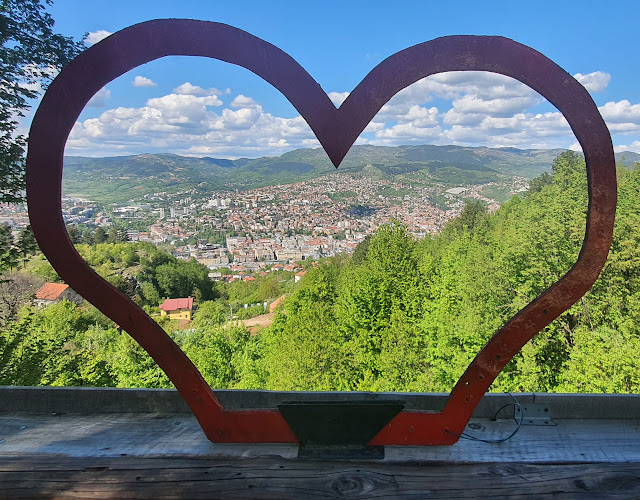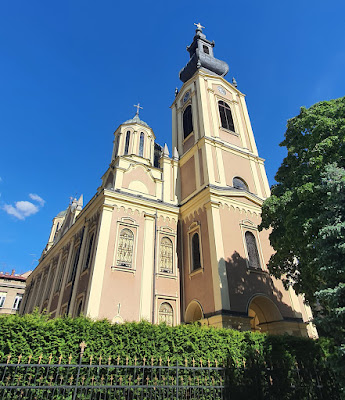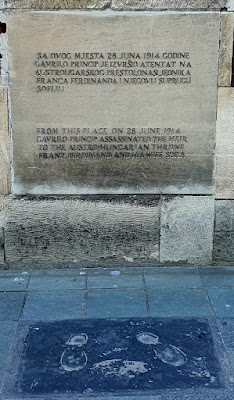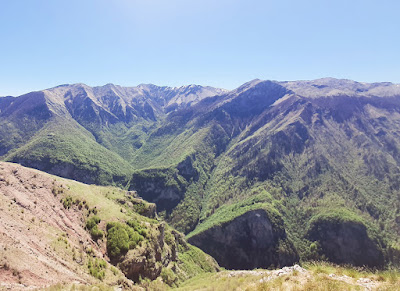From Sarajevo to Mostar
Welcome to the capital of Bosnia & Herzegovina, Sarajevo, the only metropolis in the country and with close to 300.000 inhabitants, home to almost 10% of the population.
The name of the city means "Fort for Caravans", since, in the Ottoman times, it was a very important meeting point for trading caravans from all sorts of places.
We found a great camp a fair bit uphill from the city, on one of the four Olympic hills surrounding Sarajevo. This one is called Trebevic and had a bob sleigh track built on its top for the Olymipc Winter Games in 1984. More on that later.
The owner of the camp, Samra, together with her father gave us a very warm welcome, as did the sun. The weather has come back around, and we enjoyed the view over the city with a beer in hand, sitting in the sun for the rest of the afternoon.
In the morning, my human was picked up for a 4-hour Sarajevo Siege Tour.
The tour guide Adnan has fought in the war and the siege and was wounded three times.
Who better to explain the intricacies, confusing details and the who is who in this conflict.
The siege of Sarajevo was the longest siege of a capital city in modern history.
Bosnian Serb forces started it not long after the declaration of Independence of Bosnia & Herzegovina. Considering, that the defending parties hardly had any proper weapons, the invaders expected a quick and easy win.
Instead, the siege should take 1425 days and ended with a peace agreement signed by all parties in Dayton, Ohio in November 1995.
The first stop, after passing along sniper alley, was the Tunnel of Hope.
Around a year after the siege started, this tunnel was dug from two sides underneath the airport runway, which was UN territory and therefore off limits for the Serbian forces.
It ran for some 800 meters, was only a meter wide and about 1,6 meters high.
Through this tunnel, the sieged population could be supported with food, medication, weapons and other necessary things. First it was strictly for military use, later on some civilians were able to escape through it as well.
 |
| See the blue stripe at the narrow part? Thatˋs the landing strip of the airport. The tunnel was situated underneath. |
 |
| Some of the men who helped build the tunnel |
 |
| Iron Maiden came to Sarajevo during the siege and played a couple of concerts in underground shelters. |
 |
| One tunnel entrance was in this house. By the holes in the facade you can imagine how close it was to the front lines. |
They drove on to the aforementioned bob sleigh track. After the Olympic Games in 1984 the track was used for various competitions until, during the war, it was used by the Serbian forces as an artillery position.
Then they stopped at a Jewish cemetery, the second largest in all of Europe, before returning to the city center.
Light Sunday morning entertainment, all of that!
 |
| The name Glückselig means blissful |
After a quick lunch, my human went on a walking tour with another great guide, getting to know the old city, its markets and handicraft shops.
You feel transported to Istanbul, walking through those streets, lined by coffee and kebab shops, listening to the sound of copper being beaten inside dark and smokey stores.
 |
| Bascarsija, Pigeon Square, the heart of Old Town |
 |
| Town Hall |
 |
| The largest mosque in town and the first one in Europe to have had electric lights |
 |
| Good night, Sarajevo |
Walking in a westerly direction, the Ottoman influences give way to Austro-Hungarian ones, very visible in the building styles and general atmosphere.
Marks of the war can be seen all over the place, bullet and shrapnel holes in facades, tombstones and streets.
 |
| These markings are called "Roses of Sarajevo" and show where mortar shells exploded |
Oh, and not to forget, the city played a mayor role in another war as well, of course. It was here that Archduke Franz Ferdinand and his wife Sophie were assassinated in June 1914, kick-starting the First World War.
 |
| These four markings show where the tyres of the car were placed when the assassination happened |
Nevertheless, Sarajevo exudes a liveliness and good cheer that somewhat took my human by surprise.
Adnan said Bosniaks are partial to very dark humor, which, I guess, helps a great deal to get through such dark times.
The following day, we visited the source of the river Bosna, name giving to the country and also its longest with around 280km.
It is situated in a nice green park. Or rather, the park was situated around the source, I guess.
Little streams run every which way and small bridges span over them, all rather scenic.
 |
| The source of the river Bosna |
We headed up into the hills a little bit in order for my human to hike up to the highest, at 1490m, and most remote continuously inhabited village in the country, Lukomir, which translates to Oasis of Peace.
Some 20 people live here all year round. Most of those are shepherds and their families.
Life must be hard here during the winter, when the village is pretty much cut off from the rest of the world for months at a time.
There really isnˋt much to see up here but sheep, some ramshackle houses and a handful of locals. In fact, there were more visitors than inhabitants. Which doesnˋt mean much, of course.
 |
| No neighbors as far as the eye can see, this little hut is for rent |
 |
| Lukomir |
On we went to the city of Mostar, which is famous for its old bridge and the guys who jump off it for money.
The bridge was built in 1566 (and re-built after the war) and is 24 meters high at its crest.
It spans the Neretva and connects the pre-dominantly Muslim Eastern part of the city with the mainly Catholic Western part, therefore regarded as a symbol of connection between East and West.
Four or five guys in bathers walk around on the banister, collecting money from passers-by. My human overheard a tour guide say that they collect around €50 before one of them jumps.
There are plenty of bars and restaurants you can sit in and watch the spectacle.
The old town with its narrow cobbled streets is lined by restaurants and stalls with tourist trinkets and some actual handicraft and artwork.
The cobbles are so polished, you really have to watch your step. Especially on the bridge, where the movement of people resembles a herd of buffalo more than anything else.
I donˋt want to imagine what it looks like in summer!
The city was badly damaged in the war and the scars are still very visible on many buildings and in the streets outside the center, which was restored to its old glory first and foremost, in order to become the UNESCO World Heritage Site it is today.
 |
| Mostar viewed from the surrounding hills |
 |
| Reminds you of something youˋve seen here recently? |

















































Comments
Post a Comment